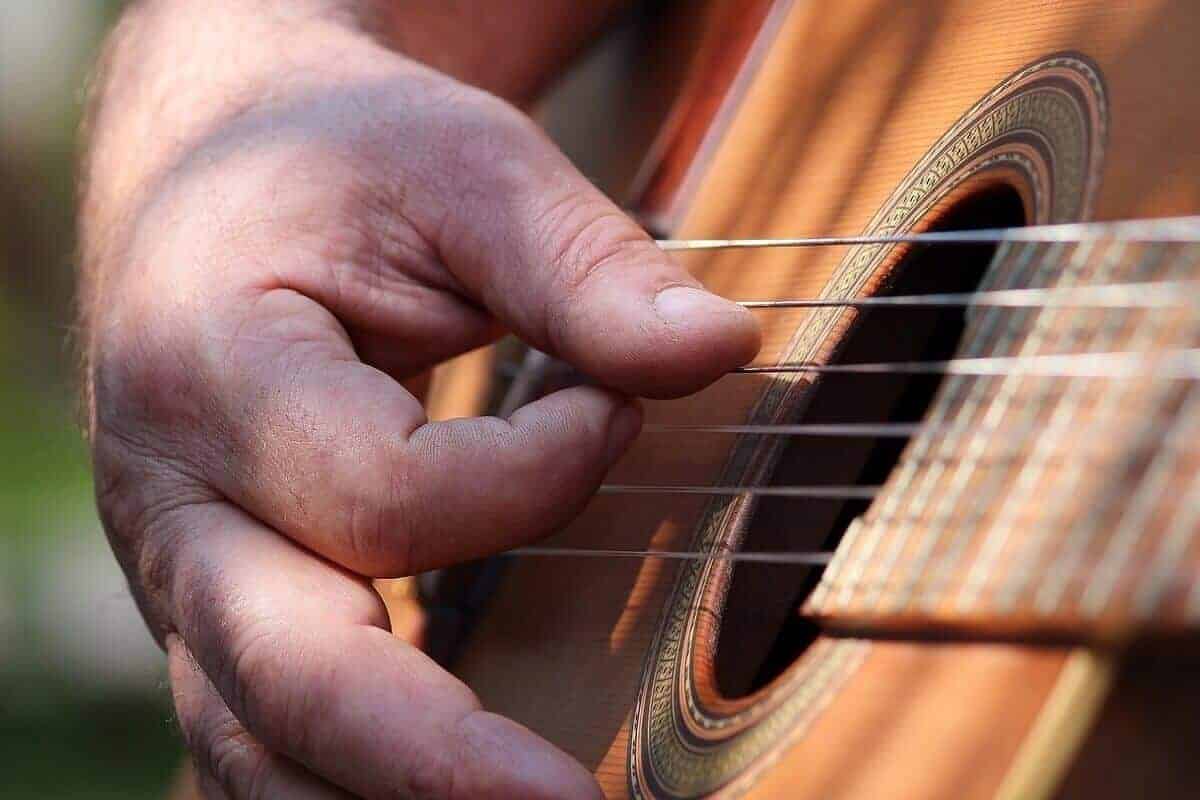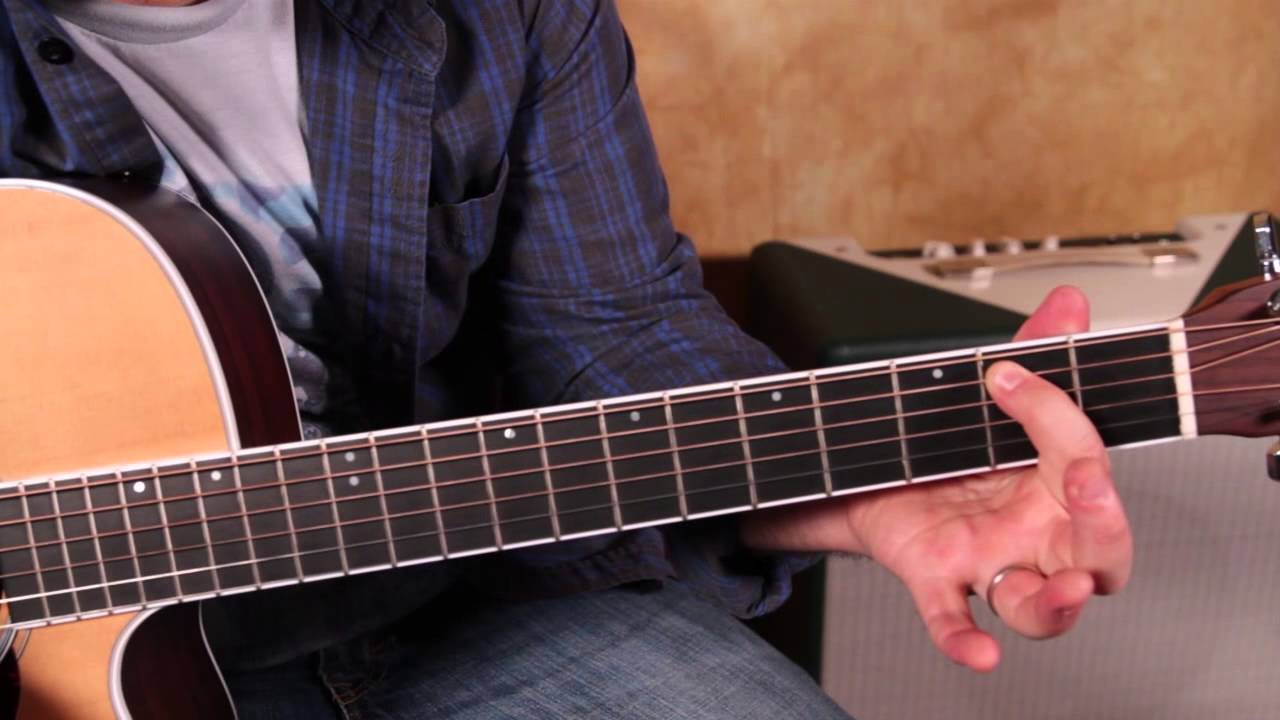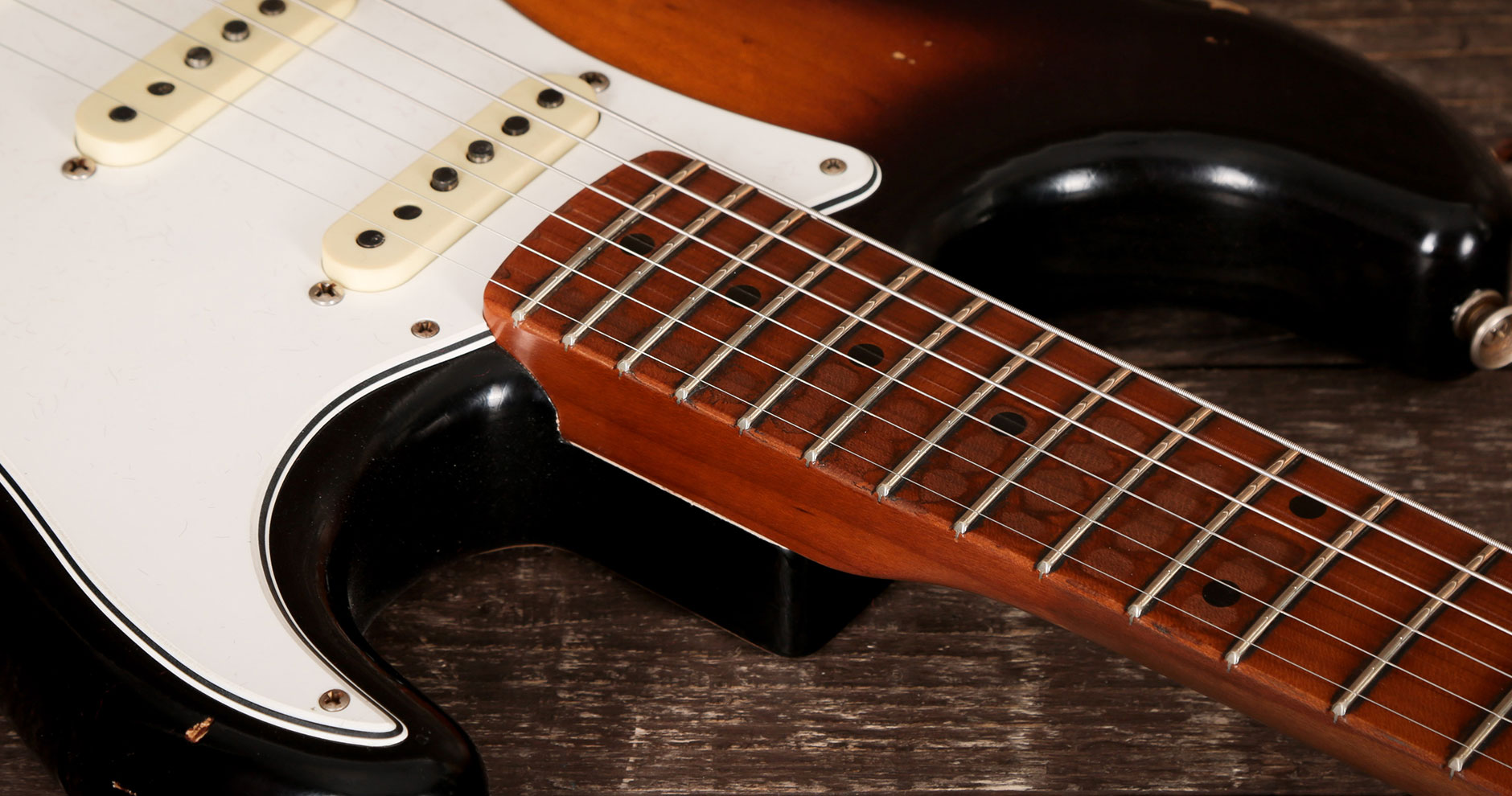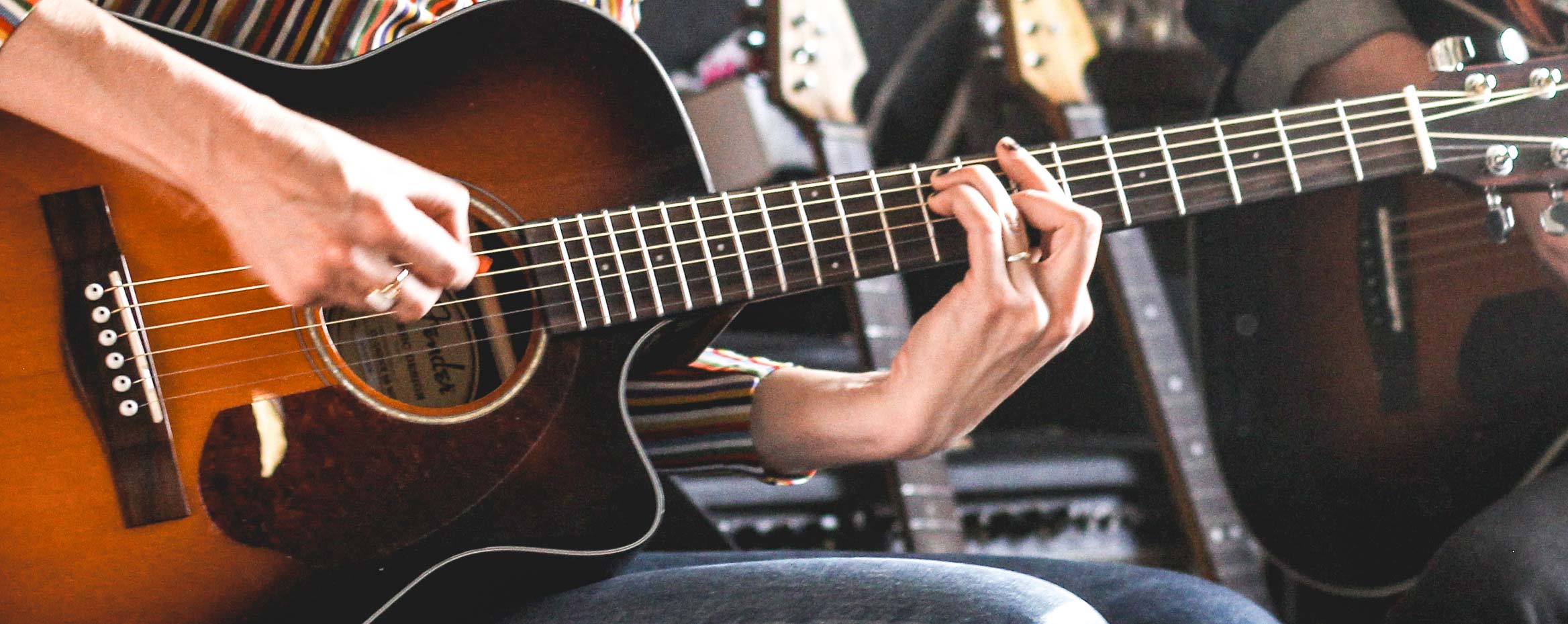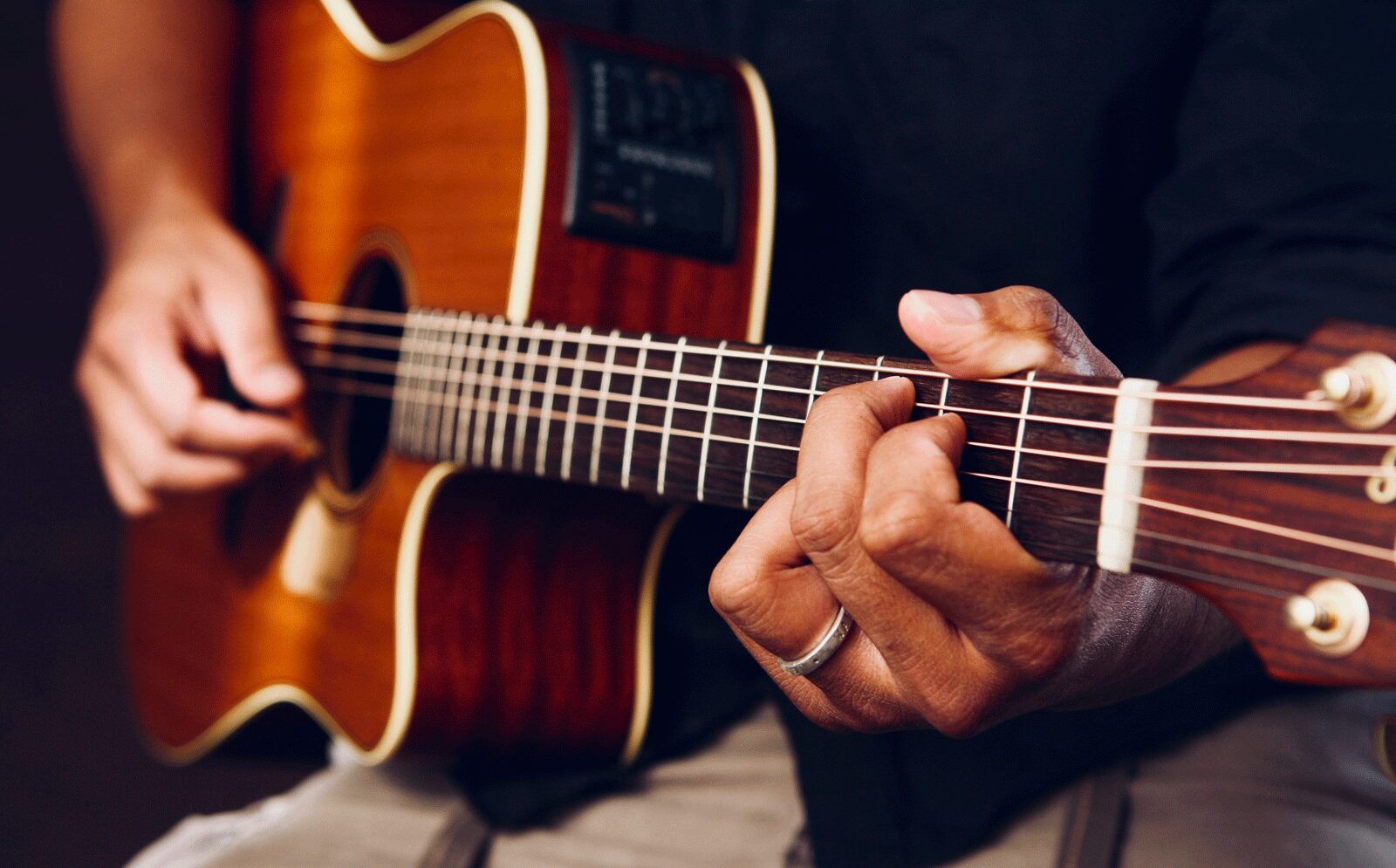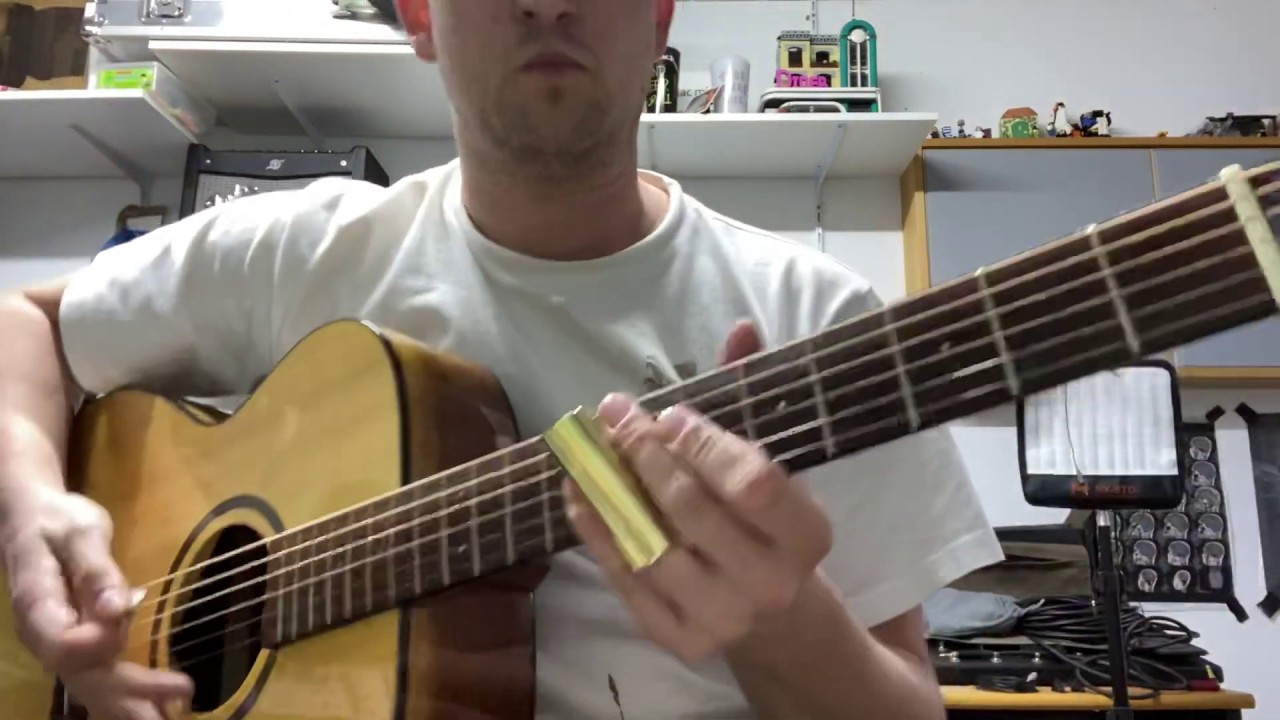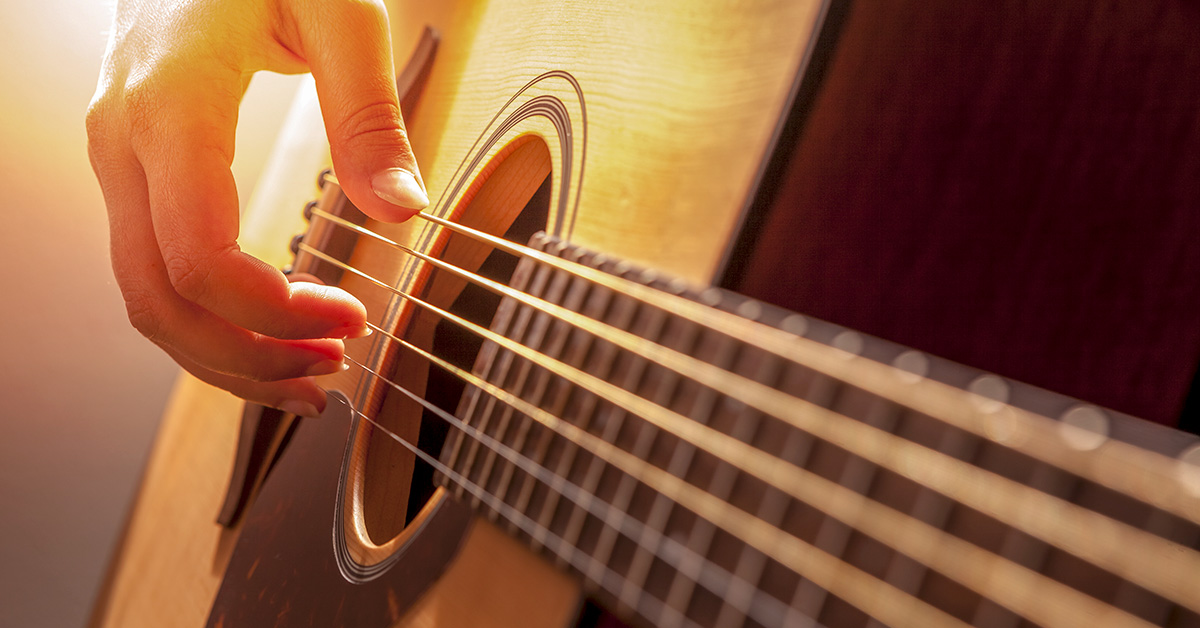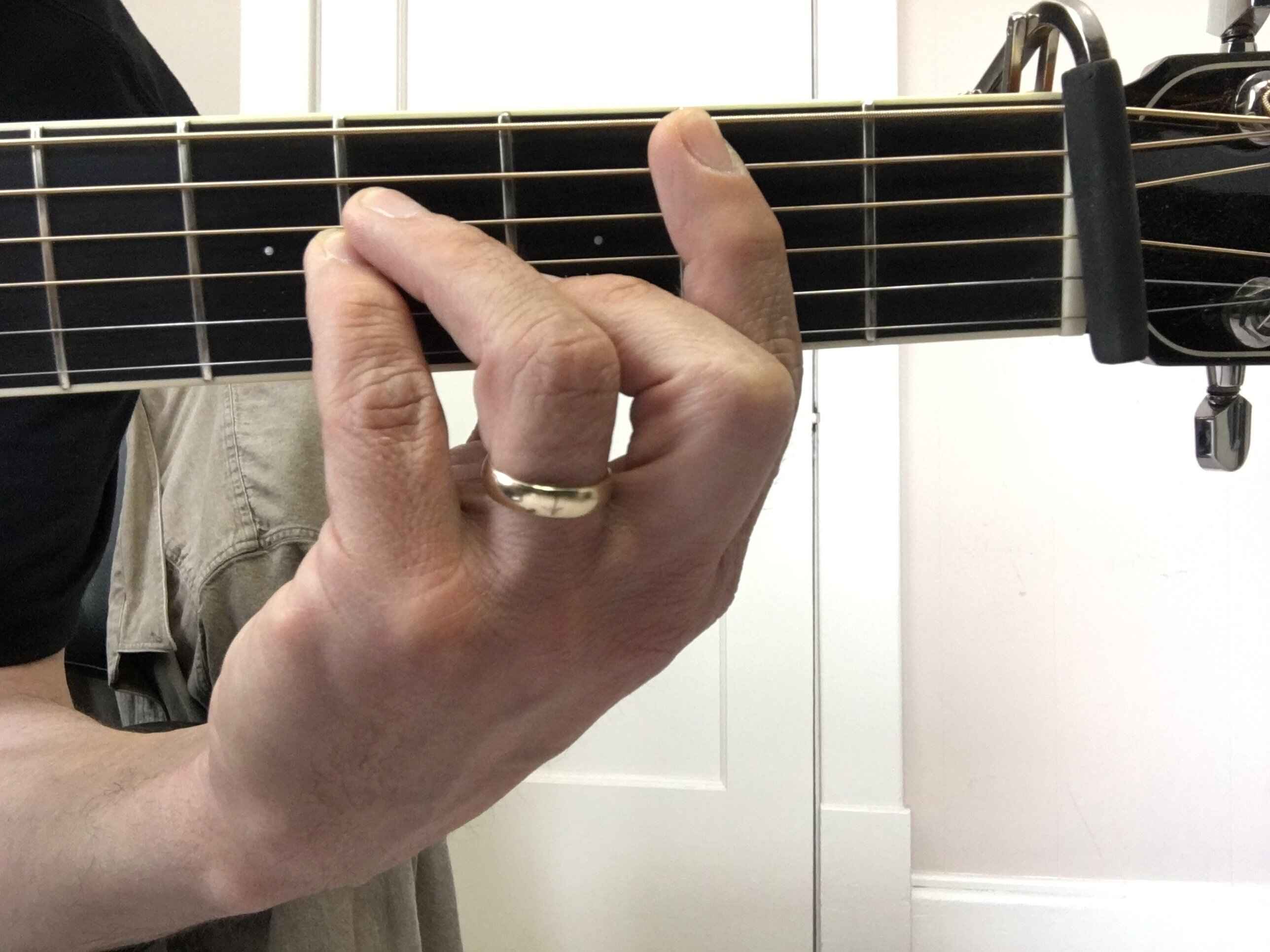Introduction
Welcome to the world of acoustic guitar playing! Whether you are a beginner or an experienced guitarist, playing the acoustic guitar can bring immense joy and satisfaction. However, if you happen to have short fingers, you might face some challenges when it comes to playing certain chords and techniques. But fear not, because in this article, we will provide you with valuable tips and techniques specifically tailored for those with short fingers.
Playing the acoustic guitar with short fingers may require some adjustments and modifications, but it does not limit your potential for musical expression. With the right knowledge and practice, you can overcome any obstacles and become a skilled guitarist.
We will start by exploring the importance of understanding your hand and finger size. This knowledge will help you determine the best approach to playing the guitar and guide you in making informed decisions when it comes to choosing the right guitar for your needs. We will then delve into proper finger placement and technique, as well as explore strategies for playing barre chords, which can be especially challenging for those with short fingers.
Next, we will provide you with a range of useful exercises and warm-ups to improve your finger strength, dexterity, and coordination. These exercises will not only help you overcome the challenges posed by short fingers but will also enhance your overall guitar playing abilities.
Additionally, we will discuss how capos and alternate tunings can be your allies in making adjustments to accommodate your short fingers. By utilizing these tools effectively, you can unlock new possibilities and expand your repertoire.
We will also explore various fingerstyle techniques that are suitable for acoustic guitarists with short fingers. Fingerstyle guitar playing allows you to create rich and melodic arrangements, and we will provide tips and strategies to help you master this technique.
Finally, we will recommend some songs that are particularly suitable for acoustic guitarists with short fingers. These songs are chosen based on their chord progressions and accessibility, allowing you to practice and showcase your skills.
So, if you are ready to embark on a journey to master the acoustic guitar despite having short fingers, read on! Armed with the right knowledge and techniques, you will be amazed at what you can achieve and the beautiful music you can create.
Understanding Your Hand and Finger Size
Before diving into playing the acoustic guitar with short fingers, it is essential to have a clear understanding of your hand and finger size. Every person’s hands and fingers are unique, and knowing your specific measurements will help you determine the best approach to playing the guitar and making necessary adjustments.
Begin by measuring the length of your fingers. Use a tape measure or ruler to measure the distance from the tip of your middle finger to the base of your palm. Write down this measurement as it will be useful later on.
Next, consider the width of your fingers. Place your hand flat on a table and spread your fingers apart. Measure the distance between the pinky finger and the index finger. Again, record this measurement for future reference.
By obtaining these measurements, you will have a better idea of the size of your hand and fingers and can make informed decisions when it comes to choosing the right guitar.
When selecting a guitar, pay attention to the neck width and the scale length. A guitar with a narrower neck might be more comfortable for individuals with shorter fingers as it allows for easier reach across the fretboard. Additionally, a shorter scale length, such as 24.75 inches, can also make playing more comfortable for those with limited finger reach.
Keep in mind that finding the right guitar is a highly personal choice, and it is crucial to try out different guitars to determine which one feels most comfortable and suits your playing style.
In addition to choosing the right guitar, proper finger placement and technique are key to playing with short fingers. Experiment with different hand positions and angles to find what works best for you. Sometimes, a slight adjustment in the angle of your hand or the position of your thumb can make a significant difference in your ability to reach certain chords.
Remember, having short fingers does not limit your potential. Many accomplished guitarists have overcome this challenge and achieved great success. By understanding your hand and finger size and making necessary adjustments, you can embark on a fulfilling musical journey and enjoy the beauty of playing the acoustic guitar.
Choosing the Right Guitar
When it comes to playing the acoustic guitar with short fingers, choosing the right instrument is essential. The right guitar can make a world of difference in your playing comfort and ability to reach certain chords and frets.
One crucial factor to consider is the neck width of the guitar. A narrower neck can be more accommodating for individuals with shorter fingers. It allows for easier fretting and reduces the need for excessive stretching. On the other hand, wider necks might pose more challenges for those with limited finger reach.
Another consideration is the scale length of the guitar. Scale length refers to the distance between the nut and the saddle of the guitar. Guitars with shorter scale lengths, such as 24.75 inches, can make it easier for individuals with short fingers to play. The reduced distance between frets means less stretching is required to reach notes and chords.
It’s important to note that choosing the right guitar is subjective, and what works for one person may not work for another. Take the time to visit music stores and try out different guitars. Pay attention to how comfortable the neck feels in your hand and how easily you can reach the strings and frets. Experiment with playing different chords and see if you have any difficulties reaching certain positions.
Furthermore, consider the type of guitar that best suits your playing style and musical preferences. Acoustic guitars come in various body shapes, such as dreadnought, concert, and auditorium. Each shape has its own tonal characteristics and ergonomics. Some shapes may be more comfortable for individuals with short fingers due to their size and shape, so it’s worth experimenting with different body styles to find the one that suits you best.
Finally, if you’re in doubt, consult with a knowledgeable guitar instructor or music store professional. They can offer guidance based on your specific needs and preferences. Additionally, online forums and communities dedicated to guitar playing can provide valuable insights from fellow guitarists who have faced similar challenges.
Remember, choosing the right guitar is a personal decision, and what matters most is that you find an instrument that feels comfortable in your hands and allows you to express your musicality. Armed with the right instrument, you’ll be well on your way to overcoming any challenges posed by short fingers and embracing the joy of playing the acoustic guitar.
Proper Finger Placement and Technique
When playing the acoustic guitar with short fingers, proper finger placement and technique are crucial for achieving clarity, accuracy, and efficiency in your playing. Paying attention to your finger placement and technique will not only help you overcome the challenges posed by short fingers but also enhance your overall playing experience.
First and foremost, it’s important to maintain a relaxed and natural hand position. Avoid tensing up or gripping the neck of the guitar too tightly. Relax your hand and allow your fingers to move freely. Relaxation helps improve finger flexibility and reduces strain, enabling you to navigate the fretboard more comfortably.
When fretting chords, aim to place your fingers as close to the frets as possible. This allows for less finger stretching and clearer sound production. Be mindful of using the very tips of your fingers to press down the strings, ensuring that you don’t inadvertently mute adjacent strings.
Your thumb placement is also essential in achieving proper finger placement. For individuals with short fingers, it can be helpful to position the thumb slightly lower on the neck, closer to the center of the neck rather than behind it. This adjusted thumb position provides more range of motion for your fingers and allows for easier reach across the fretboard.
In terms of technique, focus on using the fingertips to press down the strings, rather than using the pads of your fingers. By using the fingertips, you have more precise control and can execute chord changes more efficiently. It may take some practice to develop the necessary finger strength, but with consistent effort, it will become easier and more natural over time.
Additionally, be mindful of your finger placement when playing individual notes or melodies. Experiment with different fingerings to find positions that work best for your hand size. Utilize open string notes and partial chord shapes to create arrangements that take advantage of your finger reach. This allows you to play complex melodies and intervals without excessive finger stretching.
Finally, remember the importance of regular practice. Consistent practice will not only develop your finger strength but also improve your muscle memory and finger coordination. Dedicate time to specific exercises and drills that focus on finger mobility and dexterity. Gradually increase the difficulty as you progress, challenging yourself to reach new heights.
By paying attention to proper finger placement and technique, you can overcome the limitations of short fingers and achieve great proficiency on the acoustic guitar. With time, patience, and consistent effort, you will unlock new levels of musical expression and enjoy the wonderful journey of playing the guitar.
Playing Barre Chords with Short Fingers
Barre chords are an essential part of every guitarist’s repertoire, but they can pose a challenge when you have short fingers. However, with the right approach and technique, you can conquer barre chords and add them to your musical arsenal.
One effective technique for playing barre chords with short fingers is to focus on partial barres. Instead of trying to barre all six strings with one finger, focus on barring the necessary strings to create the desired chord sound. This means you may not play all of the strings in the chord, but it allows you to achieve a clear and accurate sound without straining your fingers.
For example, instead of attempting a full F barre chord, which can be challenging for those with short fingers, try playing an F major chord using the following positions:
- Use your index finger to barre the first two strings (E and B) on the first fret.
- Place your ring finger on the third fret of the A string.
- Place your pinky finger on the third fret of the D string.
- Strum only the barred strings and the strings you’re fretting with your other fingers.
This partial barre approach allows you to achieve the desired chord sound without the need for excessive finger stretching or straining. It’s all about finding the most efficient finger placement for your hand size.
Another technique to consider is utilizing a capo to transpose the chord to a more manageable position. By using a capo, you can adjust the key and play the same chord shapes in an easier position on the neck. This can help alleviate the strain on your fingers and allow for smoother chord transitions.
Additionally, experimenting with different fingerings and voicings can make barre chords more accessible. Sometimes, a slight variation in finger positioning can make a significant difference in your ability to play the chord comfortably. Explore different fingerings and voicings until you find the ones that work best for your hand and finger size.
Consistent practice is key when it comes to mastering barre chords. Start by slowly working on the basic chord shapes and gradually increase your speed and accuracy. Break down the barre chord into individual finger positions and practice transitioning between them smoothly. Over time, your finger strength and muscle memory will improve, making barre chords more comfortable to play.
Remember, playing barre chords with short fingers is a challenge that many guitarists have overcome. It may take some time and effort, but with proper technique, patience, and perseverance, you can conquer barre chords and expand your musical vocabulary.
Useful Exercises and Warm-Ups
When it comes to playing the acoustic guitar with short fingers, regular practice and warm-ups are essential for developing finger strength, flexibility, and coordination. By incorporating targeted exercises into your practice routine, you can overcome the challenges posed by short fingers and improve your overall playing abilities.
One effective warm-up exercise is finger stretching. Begin by placing your fingers on the 5th, 6th, and 7th frets of the low E string. Starting with your index finger, press down each consecutive fret with the remaining fingers, one at a time, until you reach the 9th fret. Then, reverse the process, releasing each finger from the fretboard in the same order. Repeat this exercise on each string, gradually increasing the speed and range of the stretch.
Another useful warm-up exercise is chromatic finger exercises. Start by placing your index finger on the 1st fret of the low E string and sequentially press down each fret with your remaining fingers. Continue this pattern on each string until you reach the highest fret on the neck. Then, reverse the process, releasing each finger from the fretboard in the same order. This exercise helps improve finger dexterity and coordination.
Additionally, practicing scales is beneficial for developing finger strength and improving guitar technique. Begin by learning and practicing the major and minor scales. Gradually increase the speed and accuracy as you become more familiar with the patterns. Be sure to pay attention to your finger placement, ensuring that each note sounds clear and distinct.
Claw exercises are effective for enhancing finger strength and independence. Start by curling your fingers into a claw shape and place them on the strings. Strum the strings with your thumb or a pick, maintaining the claw position. This exercise helps develop finger strength and control, allowing for better fretting and picking.
Machine gun exercises are great for building finger speed and agility. Pick a single note and repeatedly play it as rapidly as possible using alternate picking. Focus on accuracy and maintaining a consistent rhythm as you increase the speed. This exercise challenges your fretting hand to keep up with your picking hand, improving overall coordination.
Remember to incorporate these exercises into your daily practice routine. Consistency is key to seeing improvement. Start with a few minutes of warm-up exercises before diving into your practice session, and gradually increase the duration as your finger strength and technique improve.
Keep in mind that technique and finger strength take time to develop, so be patient with yourself. Celebrate the small victories along the way and focus on consistent progress. With dedication and regular practice, you will notice significant improvement in your finger dexterity and overall guitar playing ability.
Making Adjustments with Capos and Alternate Tuning
When playing the acoustic guitar with short fingers, making adjustments with capos and alternate tunings can be a game-changer. These techniques allow you to modify the guitar’s pitch and string relationships, making it easier to play certain chords and achieve desired sounds.
A capo is a device that clamps across the guitar’s neck, effectively raising the pitch of all the strings. By placing a capo on a higher fret, you can transpose the open chords to a more manageable position. This adjustment can be particularly useful for individuals with short fingers as it reduces the distance between frets, making chord shapes and transitions more accessible.
For example, if you find it challenging to play a G chord in the open position, you can use a capo and play the easier C chord shape in a higher position. The capo effectively acts as your “nut,” allowing you to utilize familiar chord shapes and progressions without the need for excessive finger stretching.
Another technique to consider is alternate tuning. Standard guitar tuning (EADGBE) may not always be the most optimal for those with short fingers. By altering the tuning of the strings, you can create different chord voicings and open up new possibilities.
An alternate tuning to explore for individuals with short fingers is the “Open D” tuning (DADF#AD), where the strings are tuned to D, A, D, F#, A, and D. This tuning eliminates the need to cover all the strings with a barre finger and allows for more accessible chord shapes. It can open up a range of interesting sounds and chord progressions.
Experiment with different alternate tunings, such as Open G (DGDGBD) or Dropped D (DADGBE), and see how they affect your ability to play certain chords and progressions. Be prepared to explore new fingerings and chord shapes that work well in each alternate tuning.
When using capos or alternate tunings, it’s important to note that you may need to adjust your existing chord charts or learn new chord shapes accordingly. Take the time to familiarize yourself with the changes and explore the different possibilities that arise.
Of course, using capos and alternate tunings should be seen as supplemental techniques to expand your playing repertoire rather than a replacement for learning to play standard chord shapes. It’s important to understand and gain proficiency in playing barre chords and standard chord shapes as well.
Remember, capos and alternate tunings are tools that can help you overcome the challenges of short fingers and allow you to explore new sonic possibilities. Embrace them as valuable assets in your guitar playing journey.
Exploring Fingerstyle Techniques
When playing the acoustic guitar with short fingers, exploring fingerstyle techniques can open up a world of possibilities. Fingerstyle playing involves plucking the strings with your fingertips, creating a melodic and intricate sound. This style of playing can be particularly advantageous for individuals with shorter fingers as it allows for greater control and flexibility.
One popular fingerstyle technique to explore is Travis picking. Travis picking involves alternating thumb and finger patterns to create a bass line and melody simultaneously. This technique is commonly used in folk, blues, and country music and can add depth and complexity to your playing. By practicing Travis picking patterns, you can develop finger independence and coordination, enhancing your overall fingerstyle abilities.
Another fingerstyle technique to explore is classical guitar fingerpicking. Classical fingerpicking involves using all the fingers of your picking hand, including the thumb, index, middle, and ring finger. This technique provides a wide range of tonal possibilities and allows you to play intricate melodies and harmonies. By practicing classical fingerpicking patterns and exercises, you can further develop finger strength, dexterity, and control.
When exploring fingerstyle techniques, it’s important to focus on proper hand and finger positioning. Keep your picking hand relaxed, allowing your fingers to move freely and independently. Aim to pluck the strings with the fleshy part of your fingertips, producing a clear and resonant tone. Concentrate on maintaining a steady rhythm and consistent volume as you navigate through different patterns and melodies.
As you dive deeper into fingerstyle playing, don’t be afraid to experiment with various techniques and patterns. Explore different fingerpicking styles, such as arpeggios, pinch harmonics, and percussive techniques. Each technique offers its unique sound and allows for creative expression.
Moreover, fingerstyle playing is highly conducive to arranging songs for solo guitar. By incorporating bass lines, melodies, and chord progressions into your fingerstyle arrangements, you can create beautiful and captivating renditions of your favorite songs. Experiment with different songs and genres, adapting them to suit your playing style and abilities.
Remember, fingerstyle techniques require patience and practice to master. Take the time to break down patterns and exercises into manageable sections and gradually increase the speed. Consistent practice and focused repetition will help develop muscle memory and refine your fingerstyle technique over time.
Whether you’re playing intricate fingerpicking patterns or arranging songs for solo guitar, exploring fingerstyle techniques can be a fulfilling and rewarding pursuit. Embrace the versatility and expressiveness of fingerstyle playing, and let your short fingers become a unique asset in creating beautiful music.
Recommended Songs for Acoustic Guitarists with Short Fingers
Having short fingers doesn’t have to limit your repertoire as an acoustic guitarist. Many songs can be played and enjoyed regardless of finger size. Here are some recommended songs that are particularly suitable for guitarists with short fingers:
- Wonderwall by Oasis: This iconic hit is known for its straightforward chord progression and catchy melody. With only a few basic chords like G, D, A, and Em, Wonderwall is an excellent choice for beginners and guitarists with short fingers. The use of a capo on the 2nd fret further simplifies the chord shapes and reduces the need for difficult finger placements.
- Blackbird by The Beatles: This fingerstyle masterpiece by The Beatles centers around a beautiful melody and intricate picking patterns. Despite its complexity, the chord shapes used in Blackbird are relatively simple and can be managed by individuals with short fingers. Take your time to practice the fingerpicking patterns and gradually build up speed and accuracy.
- Horse With No Name by America: Horse With No Name features a repetitive chord progression consisting mainly of Em, D6/9, and Asus2. These open chords are comfortable to play with short fingers and offer a relaxed and meditative vibe. Strumming or fingerpicking can be used to accompany the song, allowing you to showcase your own style and interpretation.
- Boulevard of Broken Dreams by Green Day: This popular Green Day song utilizes power chords, which are played with just two or three fingers across two or three strings. Short fingers can easily manage these power chords, making Boulevard of Broken Dreams an excellent choice for those looking to rock out on the acoustic guitar.
- Blowin’ in the Wind by Bob Dylan: Known as a folk anthem, Blowin’ in the Wind features simple chord shapes, including C, F, and G. These open chords are easily accessible for guitarists with short fingers. In addition, the song’s meaningful lyrics and timeless melody make it a classic choice for acoustic guitar playing.
Remember, these are just a few examples, and there are countless other songs that can be played with short fingers. Explore different genres and artists to find songs that resonate with you and suit your playing style.
Additionally, don’t hesitate to adapt songs to fit your capabilities. Experiment with capo placements, alternate chord shapes, and simplified versions of more complex songs. The goal is to find songs that you enjoy playing and that showcase your talent and musical expression.
Keep challenging yourself and have fun along the way. With dedication and practice, even individuals with short fingers can create beautiful music and enjoy a well-rounded repertoire on the acoustic guitar.
Conclusion
Playing the acoustic guitar with short fingers may present its challenges, but it should never limit your musical aspirations. With the right techniques, adjustments, and a positive mindset, you can overcome any obstacles and create beautiful music on the guitar.
Understanding your hand and finger size is crucial in finding the right guitar that suits your needs. Consider factors like neck width and scale length when choosing an instrument. Proper finger placement and technique, combined with regular practice, will help you play chords and melodies with clarity and ease.
Experimenting with capos and alternate tunings can make playing certain chords and progressions more accessible. These tools allow you to transpose and modify the guitar’s pitch to suit your finger reach. Fingerstyle techniques provide a versatile playing style for individuals with short fingers, opening up a world of possibilities.
Recommended songs offer a starting point for guitarists with short fingers to build their repertoire. Explore a variety of genres and adapt songs to fit your capabilities. With time, you’ll be able to showcase your talent and musicality without limitations.
In conclusion, having short fingers shouldn’t discourage you from pursuing your passion for playing the acoustic guitar. Embrace the challenges, be patient with yourself, and enjoy the process of mastering your craft. By embracing the knowledge and techniques shared in this article, you will break through the barriers and create beautiful music on the guitar, regardless of finger length. So pick up your guitar, practice with determination, and let your creativity soar!







